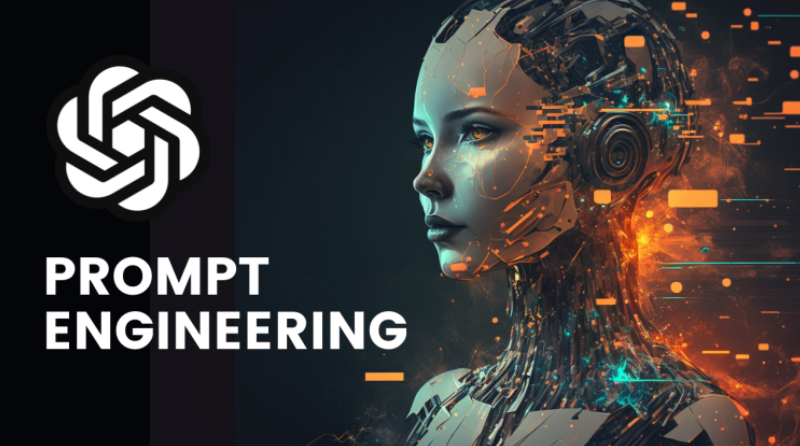Imagine having a conversation with a computer that can help you write an article, create a catchy marketing slogan, or even answer customer questions, almost as if you were talking to a friend! That’s the magic of prompt engineering, a concept that’s transforming how we interact with artificial intelligence (AI). But don’t worry if you’ve never heard of it before; we’re here to break it down and show you how it can make your everyday tasks easier.
What Is Prompt Engineering?
At its core, prompt engineering is the process of crafting specific inputs (or “prompts”) to guide AI models like ChatGPT or other Natural Language Processing (NLP) systems to generate the best possible responses. Think of it like giving a chef a recipe. If your instructions are clear, you’ll end up with a delicious meal. If they’re vague, the results might be less than satisfying. Similarly, the better you structure your question or request to an AI system, the more accurate and useful the response will be.
In simpler terms, prompt engineering is about learning how to ask AI the right questions. And the great news? You don’t need to be a tech expert to do it well!
How Does Prompt Engineering Work?
AI systems like the one writing this blog are trained on vast amounts of text data, so they can understand and generate human-like responses to almost any kind of input. However, they don’t “think” or “understand” like humans do. Instead, they rely on patterns in the data to provide useful answers. That’s why how you phrase your question matters.
For example, let’s say you ask an AI to “write about cats.” You might get a broad and uninteresting response. But if you prompt the AI with “Tell me why cats make great pets for small apartments,” you’re more likely to receive a focused and helpful answer. This is where prompt engineering shines, it helps AI help you better.
Now that we’ve covered the basics, let’s explore some exciting ways prompt engineering can be applied in the real world.
1. Content Generation
Whether you’re a marketer, writer, or student, AI can assist in generating content with the right prompts. For example, if you’re tasked with writing a product description for an online store, instead of just saying, “Write about this new coffee maker,” you could prompt the AI with something like, “Create a fun and engaging product description for a sleek, modern coffee maker that’s perfect for coffee lovers who enjoy brewing at home.” This not only helps you get more tailored content but also saves time by reducing the need for endless revisions.
Let’s say you’re writing about coffee. You could ask the AI a general question, or you could give it more direction to get a better response.
- Vague Prompt:
“Write about coffee.”
When you ask ChatGPT to ‘Write about coffee,’ it might generate this:
“Coffee is a popular drink made from roasted coffee beans. It can be prepared in many ways, including espresso, latte, and black coffee. People enjoy it for its flavor and caffeine, which provides a boost of energy. Coffee has a long history and is consumed worldwide.”
While this is fine, it’s pretty generic. You get basic information, but not much depth or focus.
- Refined Prompt:
“Write a blog post explaining the health benefits of drinking coffee, focusing on antioxidants and improved brain function.”
When you ask ChatGPT this more detailed prompt, you get a response like this:
“Coffee is not just a beverage; it’s a source of powerful health benefits. One of the key components of coffee is its antioxidants, which help combat inflammation and protect cells from damage. Antioxidants are essential in reducing the risk of various chronic diseases, including heart disease and diabetes.”
Additionally, coffee has been linked to improved brain function. Caffeine, a natural stimulant in coffee, enhances brain activity by blocking adenosine, the chemical that makes you feel tired. This results in improved mood, memory, and concentration, with some studies suggesting it could reduce the risk of neurodegenerative diseases like Alzheimer’s and Parkinson’s.”
In this refined example, the AI focuses on the health benefits and gives you specific, in-depth information, which is far more useful if you’re trying to educate readers on the topic.
2. Customer Support
In customer service, prompt engineering can enhance chatbots, making them more effective at handling queries. Imagine you’re using AI to assist with customer support inquiries. A vague prompt might leave customers more confused, while a specific prompt can lead to a clear and helpful response.
- Vague Prompt:
“How do I return a product?”
When you ask ChatGPT ‘How do I return a product?,’ it might generate this:
“To return a product, you’ll need to check the return policy of the company. Typically, you’ll need to submit a return request, pack the item, and send it back. Be sure to check if there are any fees or shipping charges involved.”
This is a general response, but it lacks specific steps and important details.
- Refined Prompt:
“Explain how to return a product purchased online, including details about shipping costs and processing times.”
When you ask ChatGPT this more specific prompt, it provides a more detailed answer:
“To return a product purchased online, first, log in to your account on the retailer’s website and navigate to the “Returns” section. You will need to fill out a return form, after which the company will provide a prepaid shipping label. If the company doesn’t offer free returns, shipping costs may be deducted from your refund.
Once the item is shipped, it can take anywhere from 5-10 business days for the company to receive and process your return. You should receive a confirmation email when the refund is issued. Keep your tracking number handy in case you need to track the return shipment.”
By giving the AI a clearer prompt, you end up with a much more helpful and specific response that addresses common customer concerns directly thereby reducing customer frustration and improving the overall support experience.
3. Creative Writing
For those in creative fields, prompt engineering opens up endless possibilities. Writers can use AI to overcome writer’s block by asking for story ideas or character development tips. Let’s say you’re writing a sci-fi novel and you’re stuck. A simple prompt like, “Help me come up with a unique setting for a futuristic city on Mars” can yield fresh ideas. You can even ask for more detailed suggestions, such as, “Describe the daily life of a character living in a floating city above Mars.”
AI is also used for creative tasks like story writing. If you’re looking for unique and engaging content, the quality of your prompt can drastically change the outcome.
- Vague Prompt:
“Write a story about a futuristic city.”
When you ask ChatGPT ‘Write a story about a futuristic city,’ it might generate this:
“In the year 3050, humanity has built towering cities where robots and humans coexist. The city of Neo Terra is full of advanced technologies, including flying cars and holographic entertainment systems. But beneath the surface, tensions are rising between humans and the AI systems that control every aspect of life…”
This story is fine, but it’s quite generic. There’s nothing particularly unique or exciting about the city described.
- Refined Prompt:
“Write a short story about a character living in a floating city above Mars, focusing on the challenges of daily life and the technology they rely on.”
When you ask ChatGPT this more detailed prompt, the result is:
“Zane woke up to the hum of the anti-gravity engines that kept the city of Skylis floating above the rust-colored surface of Mars. The skies were a constant red, a reminder that Earth was far behind him. As a mechanic in the city’s hovercraft division, Zane’s job was to maintain the engines that kept Skylis aloft. One wrong move, and the city would plummet.
Life in Skylis was anything but simple. The technology that kept the city floating was delicate, and resources were always scarce. Each day, Zane had to rely on his tools—AI-powered diagnostic systems and nanobots—to ensure the engines worked perfectly. The fate of the entire city rested on these daily checks…”
In this refined example, the story becomes much more vivid and specific, with unique challenges and technologies introduced, making it more engaging and imaginative.
In these cases, prompt engineering allows you to guide the AI’s creative process, making it a powerful tool for generating ideas, dialogue, or plot points. The quality of the AI’s response depends largely on the quality of the prompt. When you’re clear and specific, the AI has a better understanding of what you’re asking for, which leads to more relevant and useful results.
The Power of a Good Prompt
As these examples show, the way you ask a question or give instructions to an AI drastically affects the quality of the output. Prompt engineering allows you to fine-tune your requests to get more precise, informative, and creative results. By mastering this skill, you can unlock the full potential of AI in everything from content generation to customer support and creative writing.
The Future Potential of Prompt Engineering
As AI continues to advance, prompt engineering will play an increasingly important role in how we interact with these systems. Whether you’re a teacher looking for lesson ideas, a business owner trying to improve customer interactions, or a creative artist seeking inspiration, prompt engineering is a skill that can benefit almost anyone.
The good news is that you don’t need to be a tech wizard to get started. With a little practice, you’ll learn how to ask AI the right questions to get the best results. As AI becomes a bigger part of our daily lives, knowing how to “speak AI” through prompt engineering could be as essential as learning how to use a computer or smartphone.
Conclusion: Empowering You with AI
Prompt engineering is more than just a buzzword, it is a bridge that connects you to the potential of AI. It allows you to take control of how AI helps with tasks, making it a powerful tool for creativity, productivity, and customer service.
So, next time you interact with an AI, think about the prompt you’re using. A little tweak in how you ask your question could make a world of difference in the response you get. And who knows? You might just unlock the full potential of AI in ways you never imagined!



